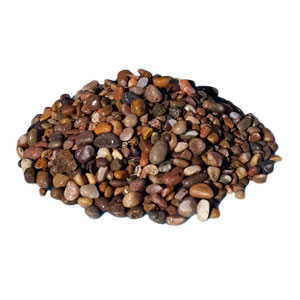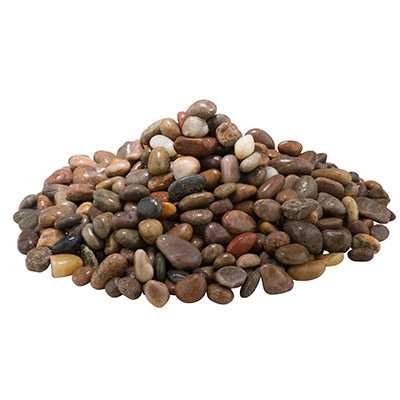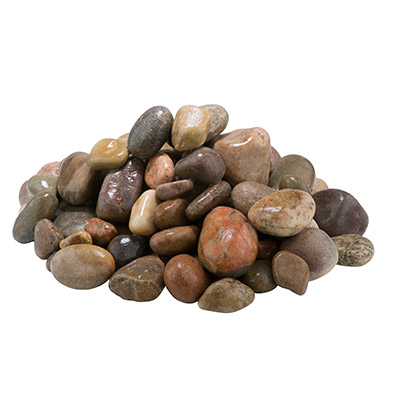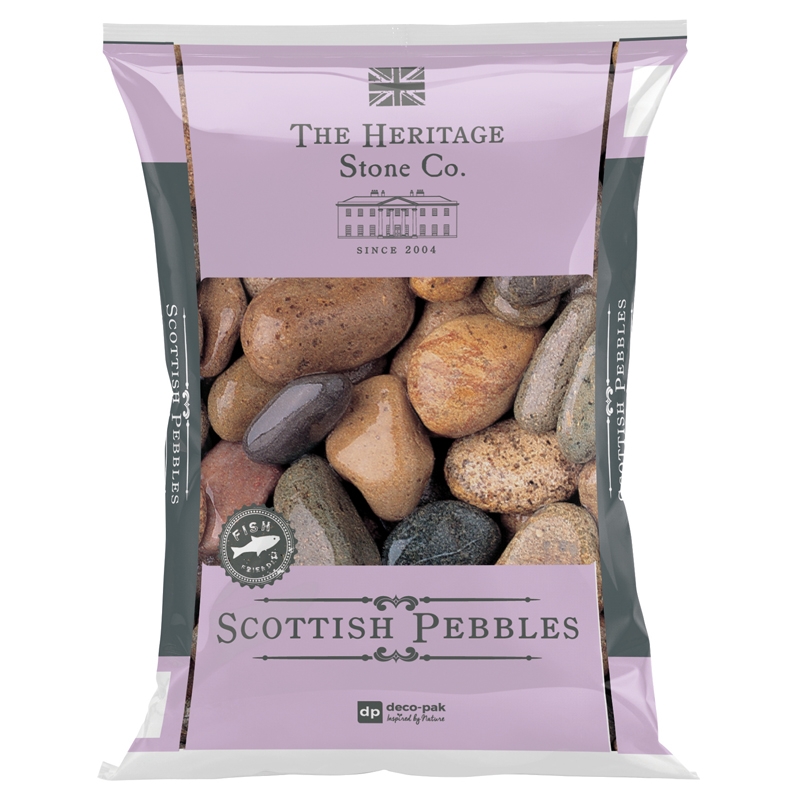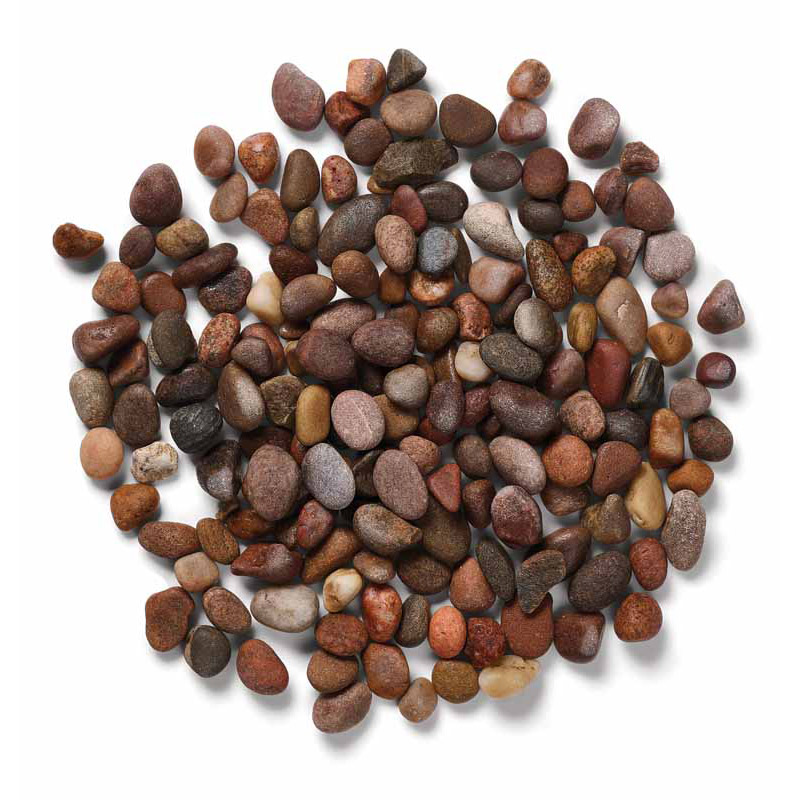Pebbles are a clast of rock about 4-64mm wide, which makes them slightly smaller than cobbles. However, both of these are often used in gardens for decorative and practical purposes.
Pebbles are rocks, distinctive for their smooth edges caused by the smoothing of ocean waves over and over again. They come in various colours that can often be associated with a certain climate or country, depending on the general rock types that predominate the area.
They are usually collected from beaches or coastlines where they form naturally from eroded rocks in the sea. However, there are also inland pebbles that were deposited by ancient seas as rocks and have been eroded and smoothed by rivers and estuaries. As river currents do not carry the same eroding power as ocean waves, inland pebbles are often not as smooth as beach pebbles.
Both these types of pebbles have been used by humans for millennia – some of the first tools were made from pebbles. Now, they are often used in the garden because they are very versatile. They can be used outdoors for construction, landscaping, and various decorations. They can also be used alongside concrete to create walkways, driveways, pool edgings, plant containers, porches, patios, and decks.
Why should you use pebbles in your garden?
Not only do pebbles have a variety of aesthetic uses, but they are durable and cooling. This means that they can be used for a large number of practical purposes too.
They’re a fantastic material for high traffic areas that other materials would wear under quicker, making them the ideal choice for walkways. But because of their durability, they can also be used around water features, in ponds, or around fountains.
Because of the cooling properties of pebbles, they make an excellent choice for water-smart gardens in areas where water is scarce or for people looking to reduce their water usage. This is because stone has a high thermal conductivity and by cooling down the soil temperature, plants require less water.

What is right for your garden?
Pebbles are a fantastic addition to any garden. They’re the perfect choice for creating a strong backdrop to your garden area and can be used as various decorative or practical features. But there are also different types of pebble to choose from.
Because pebbles can be found wherever there are coastlines, you can find pebbles in all coastal towns, in most countries. The two most popular types of pebble in the UK are the Old English Pebble and the Scottish Pebble.
Both have their own distinctive characteristics which can make a big difference to your garden space.
What are English pebbles?
These are often dull brown or slightly reddish pebbles that are intensely hard and frequently bear varying qualities like fractures and mineral veins.
English pebbles began as sand in ancient oceans south of Britain half a billion years ago. These layers of sand were squashed under tons of pressure and formed into quartzite rock layers that formed the mountainous peninsula in northern France. Over time, these mountains eroded away and desert flash floods washed the pebbles into central England.
Colourings
These pebbles form a natural mixture of brown shades ranging all the way from deep chestnut to Canterbury pink hues to granite-coloured Cornish silver to shades of light beige and Yorkshire Gold, adding authentic earthy tones to your garden area.
Because of these natural colour shades, English pebbles complement plant pot tops and rockeries very well. However, they lack some of the richness and diversity of the Scottish pebble.
Quality
Old English Pebbles are ideal for suppressing weeds and improving drainage because of their size and density. They’re also incredibly low maintenance and can deliver an instant transformation. Although they are much younger stones than Scottish Pebbles which gives them slightly less character.

What are Scottish Pebbles?
Scottish stone is some of the oldest stone in the world, originating from northern regions. Lewisian Gneiss is a type of Precambrian metamorphic rock found in the north-western part of Scotland and is the oldest type of rock in the UK.
Colourings
These pebbles are found in rich, stunning shades of warm purple and red tones, deep greys and silvers, adding instant boosts of colour to anything in your garden. The colourings of these Scottish Pebbles make for a wonderful authentic feature in any water feature, becoming glossy and giving off the soothing sounds of a babbling brook.
These warm earthy shades offer a rustic and traditional aesthetic to any garden space that will play off existing features no matter how few or many. The colours of Scottish pebbles are the ideal tone scheme to complement and contrast any and all existing tonal shades within your garden area. With ripples of pink and silvers, these pebbles have a lot of character when it comes to colour.
Quality
Our naturally sourced pebbles are extremely well valued for their colour, shape, and durability. Because of their age, these organic elements in your garden will carry the character of Scotland and evoke a leisurely walk across the most stunning coasts of Great Britain.
Their natural marbleisation means that each Scottish pebble displays its own distinct patterns and ripples.
How to use Scottish pebbles and cobbles in your garden
These long-lasting pebbles make fantastic plant pot toppers by reducing weed growth and improving the water retention of your plant’s roots. They’re also very durable for high-traffic areas so they make a great choice for driveways and pathways, providing a natural and attractive edging.






